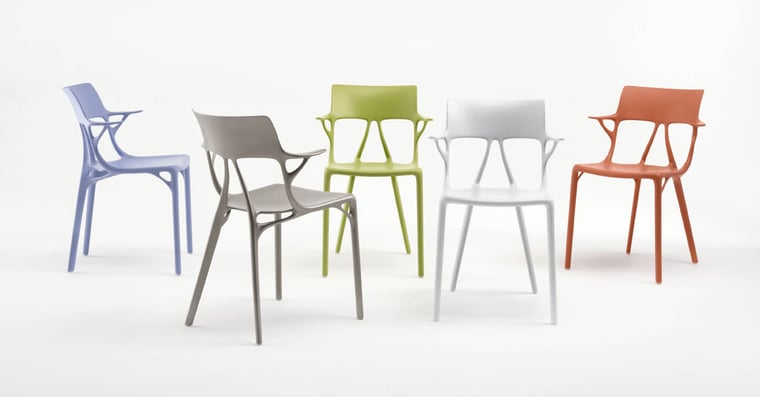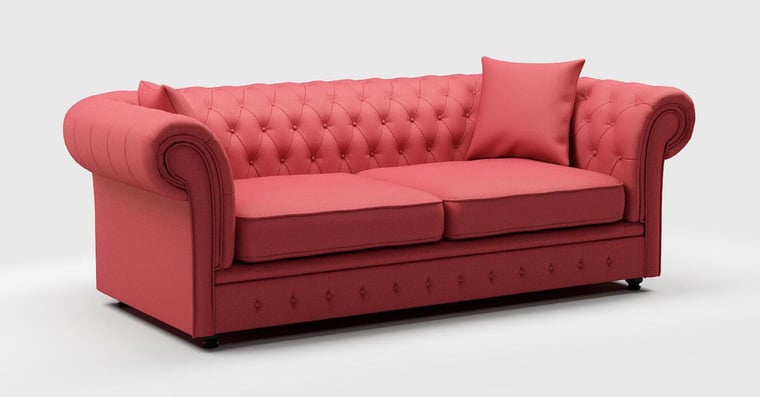
The revolution of fabrics: Technology changing furniture manufacturing
When thinking of the Eames chair, the Le Corbusier LC2 or Jacobsen’s Egg Chair, they’re all renowned furniture pieces that were considered revolutionary because they featured innovative design and new technology. Furniture manufacturing is never stagnant and has produced iconic designs that are reflective of the new discoveries and materials of their time.
In the digital age, furniture manufacturing continues to evolve. There’s much to learn and so much technology to explore that can make designs and products unique for the discerning clientele. Designers have a wealth of materials they can use, and many are focused on innovation as well as sustainability.
The rapid advances in technology and greater access to information on the internet is driving change faster and faster. The same thing is happening in the furniture industry with tech impacting the way furniture is designed, manufactured and sold.

Artificial Intelligence
AI is already used in many areas of our lives. In furniture manufacturing, AI is in the early stages of being used for design. The algorithms derived through machine learning take into account predetermined parameters, data that includes ergonomics and patterns of use and then derives thousands of iterations to get the best solution. Architect and designer Philippe Starck has already created a chair with the help of artificial intelligence and the design is appropriately named A.I.

3D Printing
Furniture designers and manufacturers are seeing the benefits of 3D printing. It could be used for the easy manufacture of components or even the frame of a furniture piece. In some instances, it’s already being used to print fully formed chairs. 3D printing opens opportunities for sustainable manufacturing by using waste plastics and it also means a design can be created in one country and printed in another, thereby removing access barriers. Although 3D printing isn’t at an industrial scale yet, the technology’s advantages are fast becoming reality.

Digital Fabrics
Twinbru’s technology is sure to be a positive disruptor for the furniture manufacturing industry. Specifically, digital fabrics offer a number of benefits for the future-thinking furniture designer who is looking to get a technological edge.
Digital prototyping – With digital fabrics, it’s possible to see a finished design or product in the exact fabric or multiple fabric options to determine the best upholstery choices. By building the prototype digitally, there’s considerable time and cost-saving and the prototype appears in the correct dimensions, proportions and can be viewed from every angle, under different lighting too.
True fabric character – Instead of waiting for a fabric sample, digital twins of fabrics show the true colour and texture of the fabric so you get a realistic representation of how the fabric will look and even feel before touching the physical sample.
Access to an extensive library – Don’t waste time searching or chasing fabrics when Twinbru’s extensive fabric library gives you access to a wide range of patterns, textures, and colours to choose from.
But wait, there’s more…

Augmented Reality
Building on the advantages of digital fabrics, augmented reality offers a look at objects in a space with a better sense of colour and scale. Several companies are starting to invest in this technology to give clients a realistic visualisation of the furniture in their home environments or to simply be able to view the product more closely as though it was physically present, even if it’s 3D visualisation. With augmented reality, potential customers can also quickly and easily change the upholstery and view the texture of the fabric.

Game-Changing
Although we’ll soon also be dealing with sofas with built-in fast charging mats or full internet connectivity, the basic need for highly functional and beautiful furniture design will always remain. The demand is great for a product that is high quality, durable and also differentiated from the myriad of options available so, any advantage for business is welcome in the Fourth Industrial Revolution.


 English
English  ελληνικά
ελληνικά
0 comment(s)